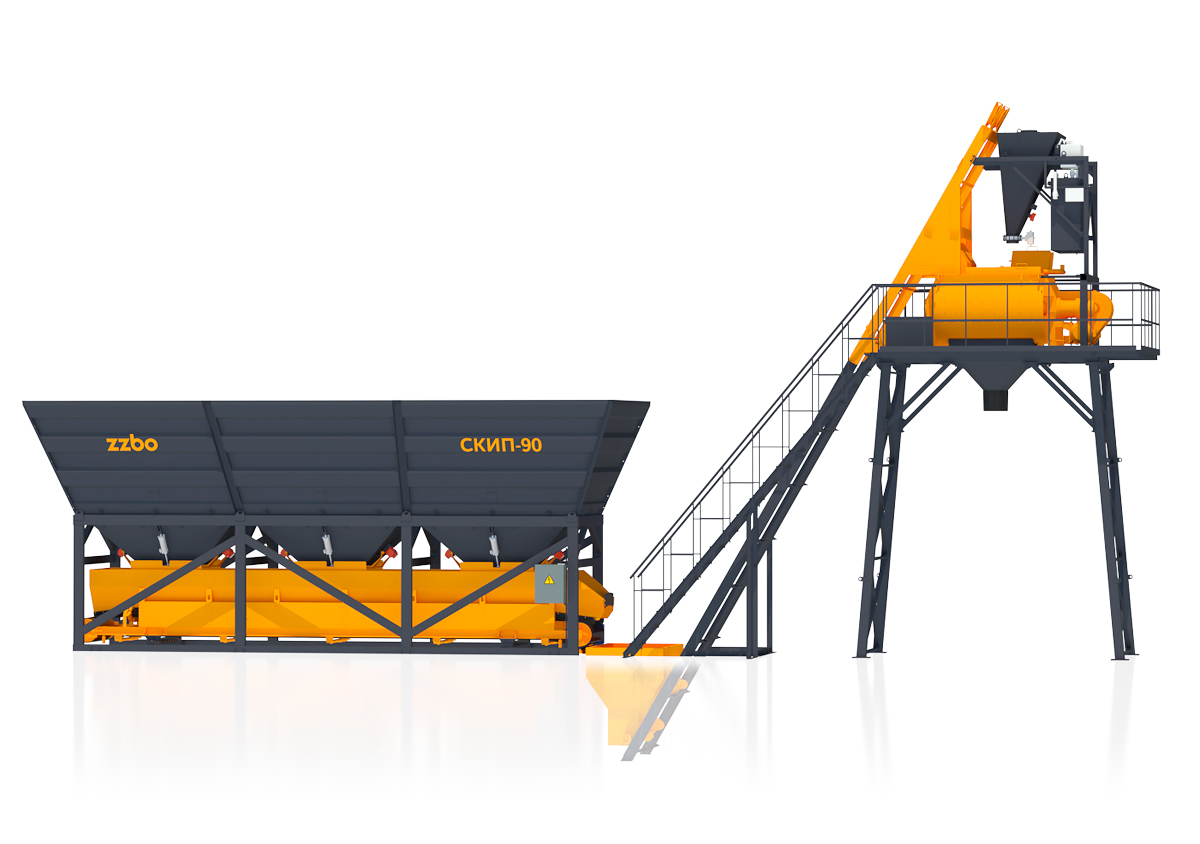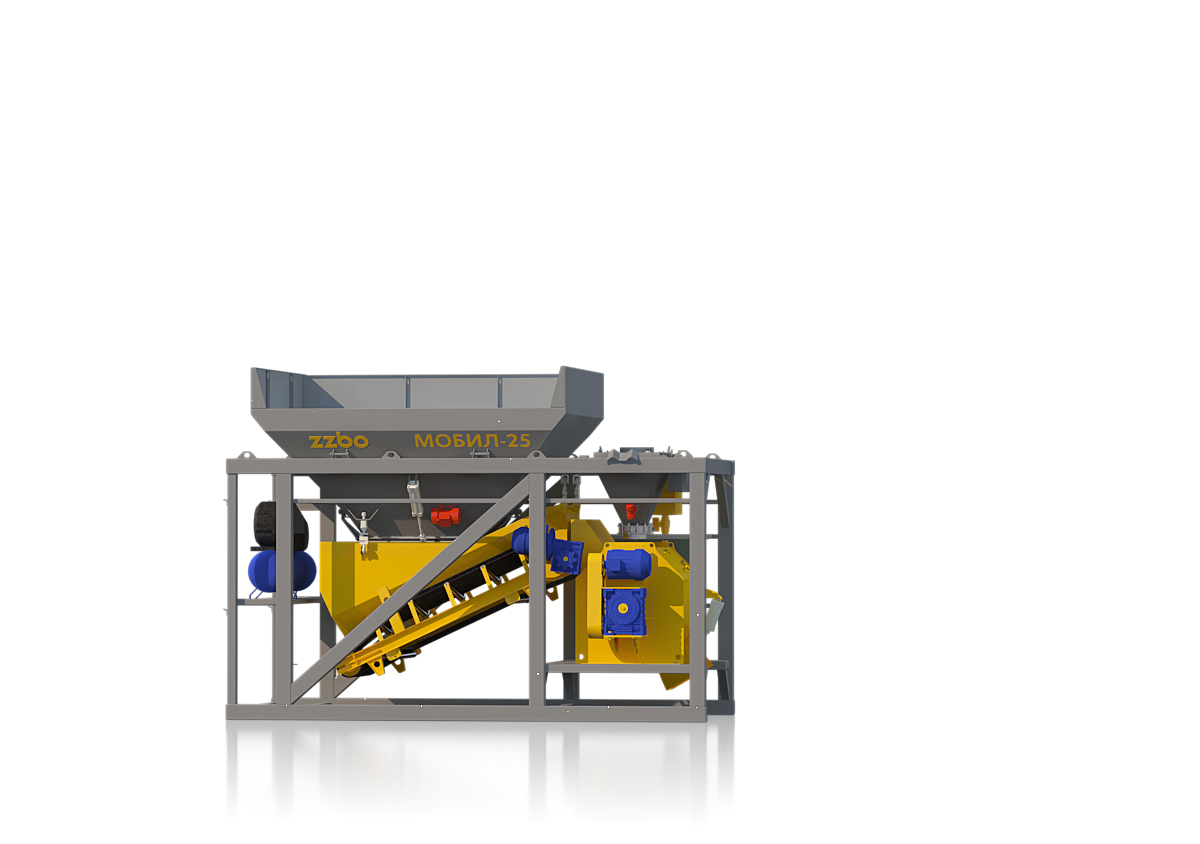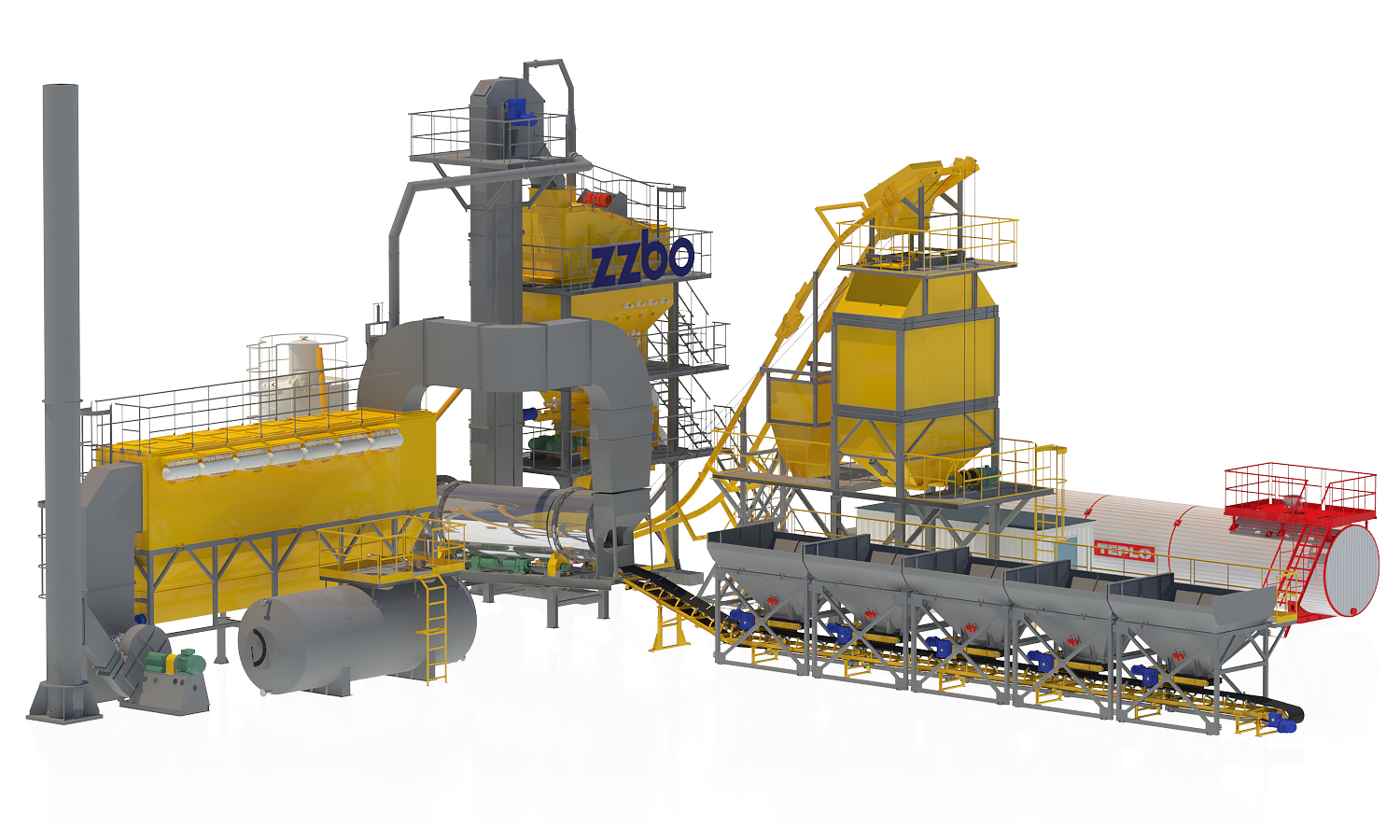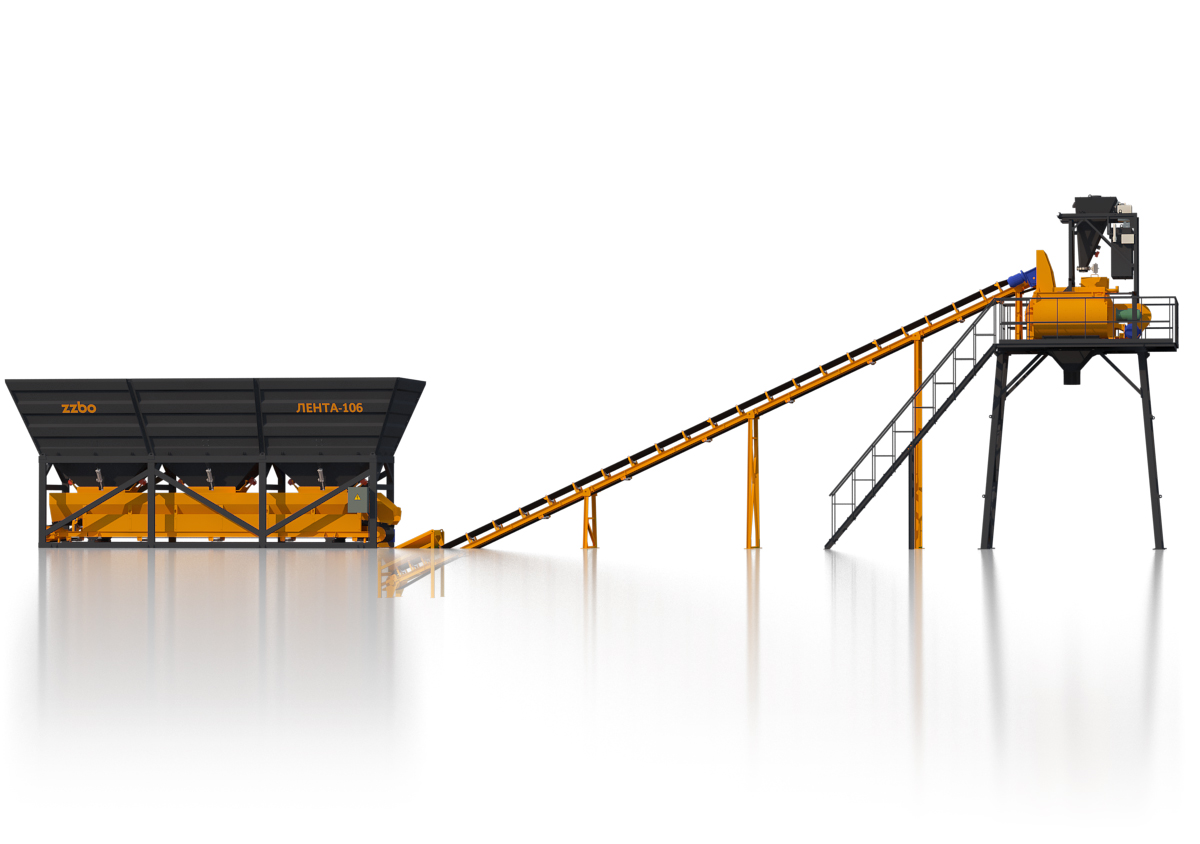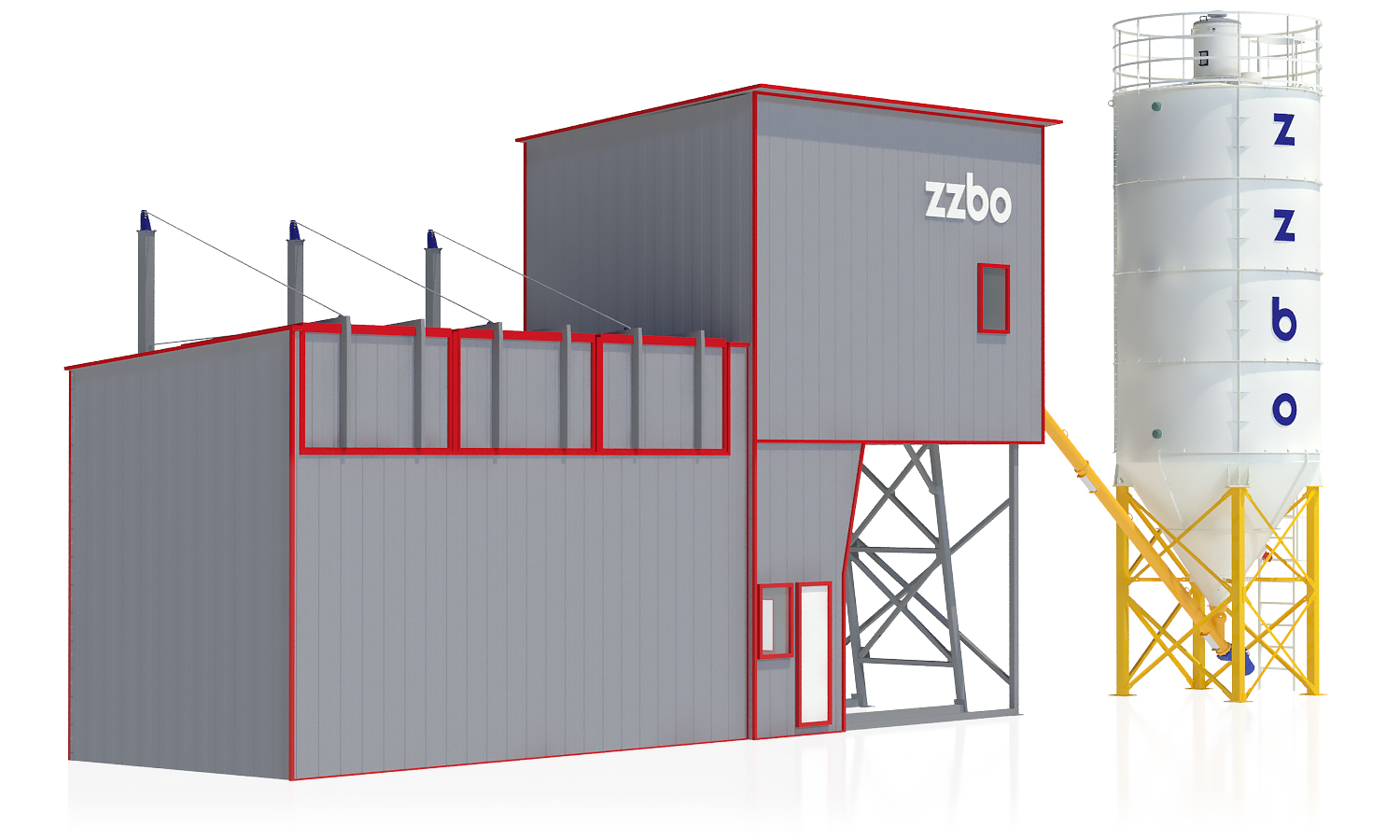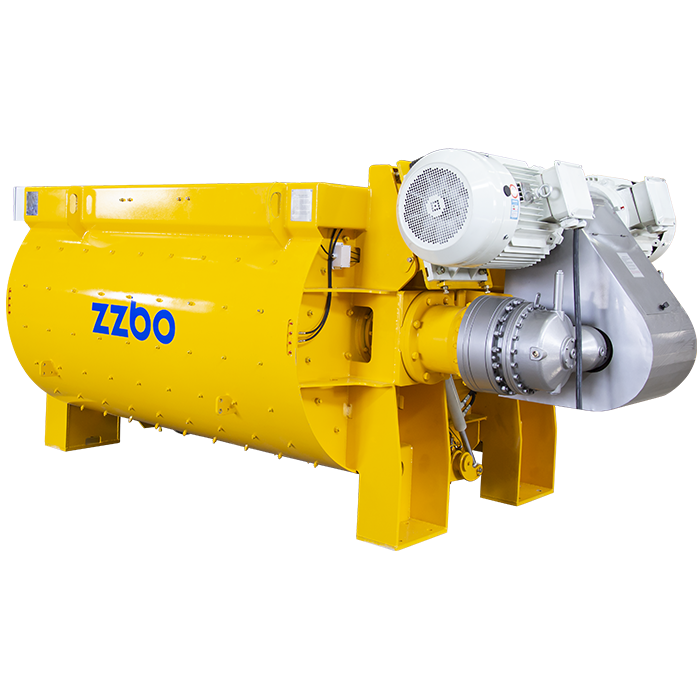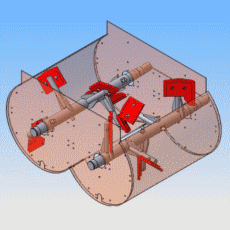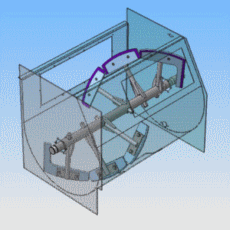All mixers are designed on two principles collapse mixture:
- gravity;
- forced.
The mixture was gravity concrete mixers placed in the drum, rotates together with
him and fall from the top under the influence of gravity. We forced concrete mixers
drum remains fixed during the mixing of the concrete mixture, the mixture components
mixed special working blades.
Concrete mixers of forced type are divided into two main types:
- mixers with vertical shaft with one or two ivertikalno - cylindrical body;
- бетоносмесители с горизонтально расположенными одним или двумявалами и горизонтально – цилиндрическим корпусом, на торцах которогорасположены подшипниковые узлы. К смесителям именно такого вида относятся mixers production zbo.
Products ZZBO - single-shaft and twin-shaft mixers with a horizontal
shaft installations, their symbols, respectively, BP - and BP 1G - 2G. single-shaft
mixer equipped with a shaft on which are fixed to the stirring blades 6
mixture. Twin-shaft mixer is equipped with two shafts 10 which are mounted on
blades. The advantage of a double-shaft mixer is that the shafts
rotate towards each other, creating the effect of flipping a mixture with its cutting.
As the mixture is stirred in a closed ring, it creates turbulence effect,
which has a positive effect on the quality of the concrete mix.
Compulsory mixers are divided:
- with a vertical shaft position.
- with horizontal shaft.
Concrete mixers with vertical shaft arrangement are divided into:
- Rotor (tarelchatыe, kotloobraznыe): в последнее время мало используются, т.к. морально устарели по конструкции. Не дают должного качества в перемешивании, не высокая однородность, длинное время перемешивания, низкая производительность. Все основные производители бетоносмесительного оборудования отказались от производства таких бетоносмесителей.
- planetary countercurrent: Смесительные звездочки вращаются вокруг вертикальной оси бетоносмесителя и обеспечивают интенсивное перемешивание при минимальном перемещении смеси. Высокое качество и однородность смеси. Имеют сложную конструкцию привода. Высокую цену. Высокая цена и сложная конструкция такого типа бетоносмесителя, является сдерживающим фактором внедрения на рынок и малой популярности среди производственников
Concrete mixers with horizontal shaft are divided into:
- single-shaft (With one agitator shaft on which the vanes 6)
- twin-shaft (With two mixing shafts on which the blade is 10)
Due to increased demands on the mixing process at the moment the best models for stirring considered planetary countercurrent and dvuhvalʹnye mixers.
Наш завод производит бетоносмесители двух типов одновальные и двухвальные. Сравним самые популярные модели бетоносмесителей нашего производства, внеся их данные в одну таблицу:
We start from the core, the mixing principle:
- from single shaft BP-1G one mixing shaft (positioned horizontally) with 6 blades arranged in two opposing spirals
- у двухвальных БП-2Г: два смесительных горизонтальных вала c 10 лопастями, вращаясь друг другу навстречу, создают эффект подбрасывания смеси с разрезанием ее, а также эффект турбулентности (перемешивания смеси по замкнутому кольцу). Это положительно сказывается на качестве смеси и скорости перемешивания. Высокая однородность и качество смеси, короткое время замеса (около 30 секунд).
| Characteristics | BP-2G-750 | BP-2G-375 | BP-1G-450 |
| Mixing Time, seconds | 30…60 | 30…60 | 60…120 |
| Number of cycles per hour | 60 | 60 | 30 |
| Number of mixing shafts | 2 | 2 | 1 |
| Number of mixing blades | 10 (5 x 2) | 10 (5 x 2) | 6 |
| Productivity per hour, cubic meters | 20…30 | 10…15 | 6..9 |
| Energy consumption for cooking cube mixture kW | 0,35 | 0,35 | 0,7 |
| The rate of discharge mixture seconds | 5…15 | 5…15 | 15…30 |
| shutter Control | pneumatic cylinder | pneumatic cylinder | manual |
| armor | 65G removable screw | 65 g shift | St3 Welding |
To summarize the comparison of our mixers:
- cement savings: due to efficient mixing in Scheme twin-shaft mixers cement savings of about 15%Without loss of strength of the concrete. This affects the profitability and value of the final product! In concrete products, the bulk of the cost is cement.
- electricity consumption in a double-shaft mixer twice less. For example for the preparation of 5 cu. mixture in the mixer single-shaft consumed 3.5 kW, and double-shaft only 1.75 kW.
- Performance: Twin-shaft mixers have better performance due to less mixing time and quick discharge.
- The quality of the mixture: Y-shaft mixer above the homogeneity (uniformity) of the resulting mixture, with efficient scheme stirring: the process of preparing the mixture in the twin-shaft concrete mixer eliminates any possibility of the components of the bundle in the mixture, which occurs in mixers with a vertical axis due to the difference in density of the various components of the mixture, some of which It may be lighter than water.
- Service: Robust design, removable armor typical Easily replaced and inexpensive components (bearings, gearbox, electric motor), a fully collapsible design, a large inspection hatch - these are the advantages of two types of mixers.
- Dimensions. Twin-shaft mixers are more compact, so that the overall dimensions of concrete plants and concrete mixing plants less.
- Price: Twin-shaft mixers expensive single-shaft 15 ... 20%, but this overpayment quickly pays for itself during the operation.



